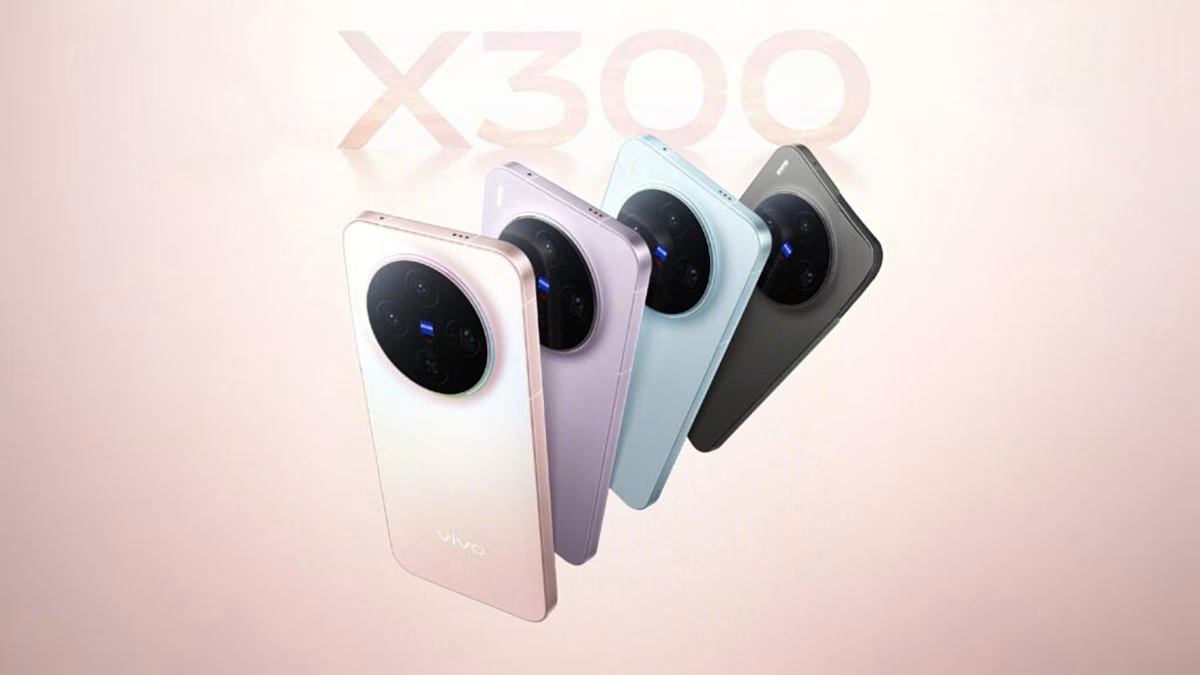Vivo X300 Pro Arrives, Packing an Ultra-Rivaling Camera Punch
The smartphone world is abuzz, and for good reason: Vivo has just pulled back the curtain on its latest flagship duo, the X300 and X300 Pro, launched in China on October 14th. Notably, the X300 Pro, in particular, is making waves. Why? Because it’s channeling the acclaimed camera prowess of Vivo’s hyper-premium "Ultra" handsets, bringing genuinely impressive imaging capabilities to a more accessible price point. This isn't just another spec bump; it's a statement.
It feels like Vivo has been quietly refining its camera game, and the X300 Pro seems to be the culmination of that effort, pushing the boundaries of what a non-Ultra device can achieve. You know, making those high-end features available to us regular folk who don't necessarily want to drop over a grand on a phone. Pre-orders are already underway in China, with sales kicking off on October 21st, and tech enthusiasts are definitely paying attention.
A Camera System Designed to Impress
But the innovations don't stop there. The main camera, interestingly, might even surpass that of the X200 Ultra. It features the Sony LYT-828, a successor to the sensor used in its more premium sibling, and sports a faster f/1.57 aperture. This combo means better light gathering and potentially superior low-light performance. However, there’s always a trade-off. The ultrawide camera, while still a capable 50-megapixel unit, does seem to be a step down from the X200 Ultra’s, utilizing a smaller sensor that probably won’t deliver the same level of image quality, especially when the lights dim. Still, all three rear cameras support 4K, 120fps, 10-bit Log video recording, which is fantastic news for budding mobile videographers.
The Game-Changing Telephoto Extender
When I used it with the X200 Ultra, the shots I captured at extreme distances were genuinely extraordinary—things no other phone could really manage. And, honestly, I’m a bit surprised Vivo is rolling this support out to its regular flagships so soon, rather than keeping it exclusive to the Ultra line. That’s a bold move. It’s still sold as part of a larger Photography Kit, which includes the mounting case and a camera grip that conveniently packs a built-in battery pack. For anyone serious about mobile photography, this modular approach, making extreme telephoto accessible, is a genuine game-changer. It’s a testament to Vivo’s commitment to pushing mobile imaging boundaries.
Beyond the Lens: Performance and Design
Beyond the impressive camera tech, both the X300 and X300 Pro are powered by MediaTek’s flagship Dimensity 9500 chipset. This chip is a formidable rival to the Snapdragon 8 Elite Gen 5, ensuring snappy performance across the board, from demanding apps to graphically intensive games. And it’s not just about speed; MediaTek touts significant efficiency improvements.
Other shared specs are equally premium: you’re looking at rapid 90W wired charging and a very respectable 40W wireless charging. Durability isn't an afterthought either, with both phones boasting IP68 and IP69 ratings. And for security? Ultrasonic fingerprint sensors. When it comes to displays, the Pro is a big phone with a vibrant 6.78-inch panel, while the regular X300 offers a more compact, perhaps more pocketable, 6.31-inch screen. Both devices are impressively slim, coming in below 8mm thick.
Battery-wise, the X300 Pro gets a 6,510mAh silicon-carbon cell, while the X300 has a 6,040mAh one. Vivo makes some rather bold claims here, suggesting that thanks to efficiency optimizations, these batteries offer longevity comparable to 7,500mAh and 7,000mAh cells found in other hardware. That’s a big statement, and we’re definitely looking forward to putting those claims through their paces in real-world testing.
Pricing and Availability: What to Expect
The X300 series is available now in China, running on the new OriginOS 6, which is Vivo’s take on Android. The standard X300 starts at ¥4,399 (around $620 USD), making it quite competitive. The X300 Pro, with its enhanced camera setup, begins at ¥5,299 (roughly $745 USD). The telephoto extender lens is available separately for ¥1,299 (around $180), or you can grab the full Photography Kit for ¥1,499 (about $210).
While initial availability is China-only, Vivo has indicated broader release plans. Its flagship models typically launch across Asia and in some European markets. Here’s a monumental piece of news for international users, and it’s a long time coming: Vivo has confirmed that OriginOS 6 will finally replace the much-maligned Funtouch OS software in global markets. This is a huge win for non-Chinese users who've often found Funtouch clunky and laden with bloatware. The expectation is a global rollout in early 2025, probably Q1. With the X300 Pro, Vivo isn’t just competing; they're setting a new benchmark for what we can expect from a flagship device that doesn't carry an "Ultra" designation—and, frankly, they've set a high bar for any future X300 Ultra to clear!
